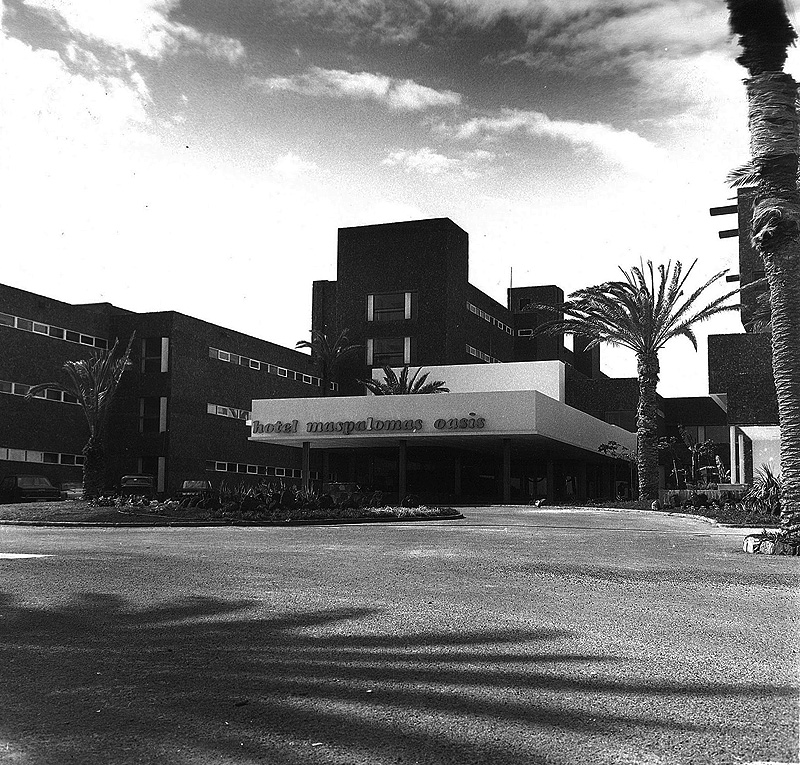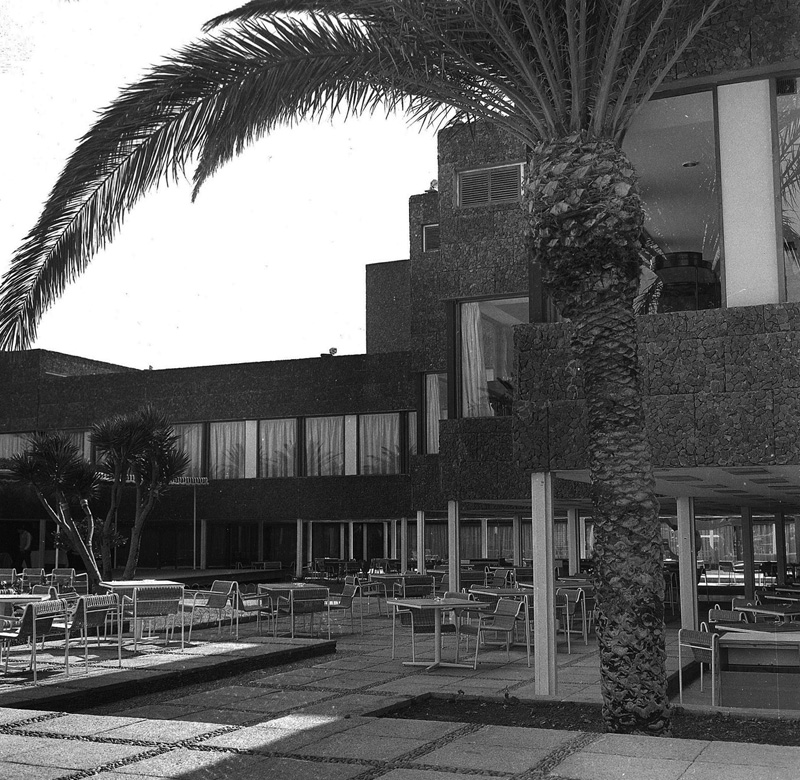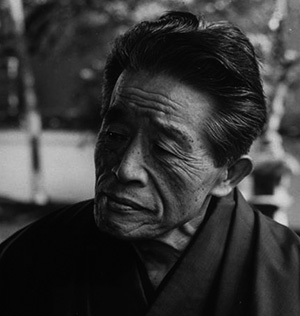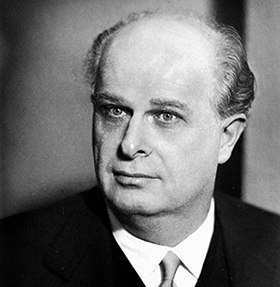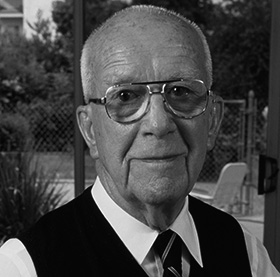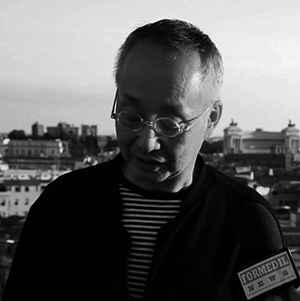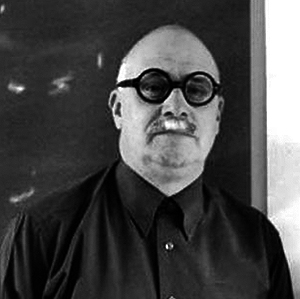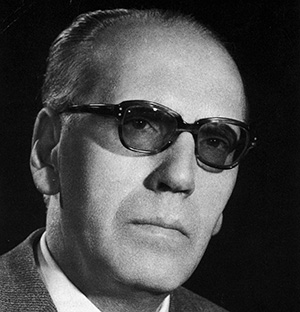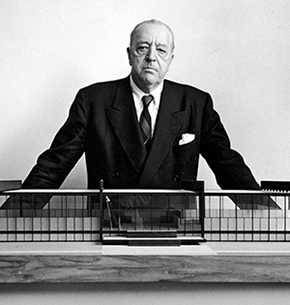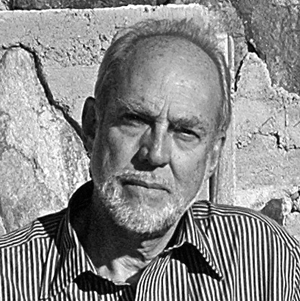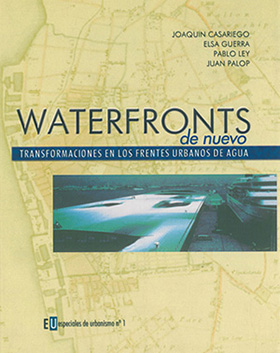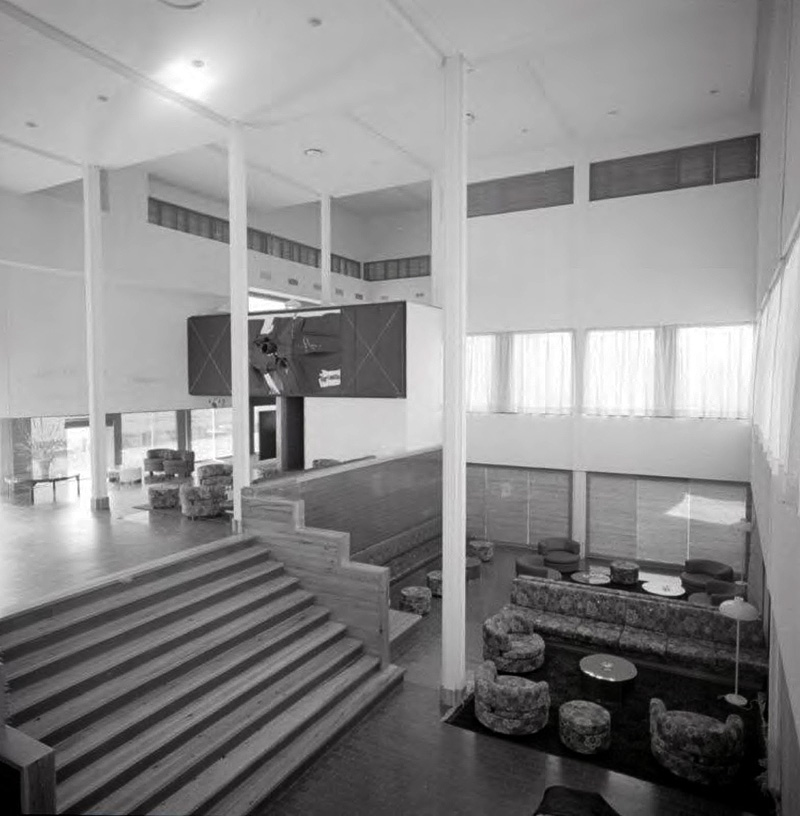 Major Indoor Lobby Hotel Oasis. Maspalomas, Gran Canaria. Corrales and Molezún collaboration with De la Peña. 1964
Major Indoor Lobby Hotel Oasis. Maspalomas, Gran Canaria. Corrales and Molezún collaboration with De la Peña. 1964
Modern Architecture held in Spain is constantly in danger because society and our public representatives are not aware of the cultural value that certain buildings have been providing over the last half century. An example of this is located in Maspalomas Oasis Hotel, island of Gran Canaria and whose protection claims in this article the American critic David Cohn.
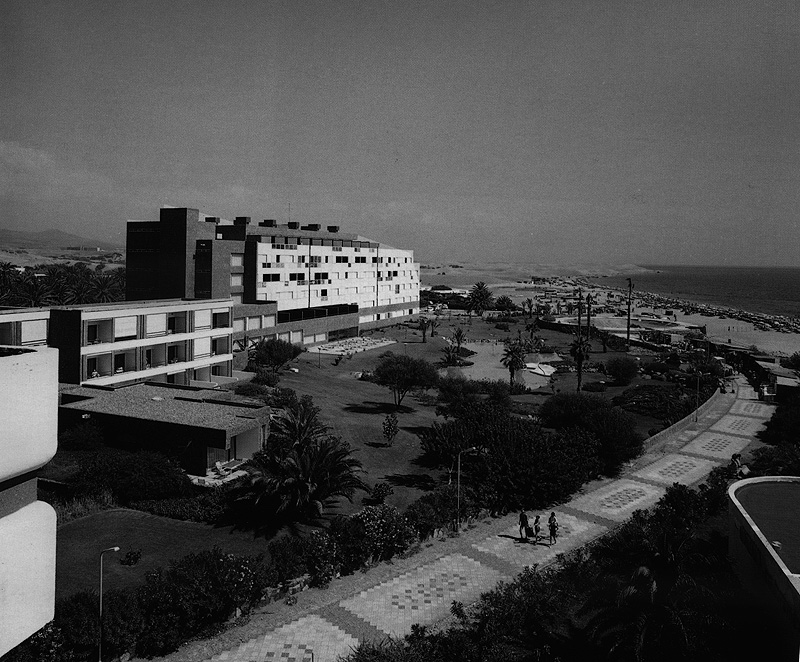 Newly finished building exterior In the mid-year 60. Image: Francisco Rojas Fariña. Cultural History of the Canary Islands
Newly finished building exterior In the mid-year 60. Image: Francisco Rojas Fariña. Cultural History of the Canary Islands
HOTEL OASIS
Proponents of modern architecture struggling to save a tourism model in the Canary Islands
PorDavid Cohn
Article published magazine Porla Architectural Record. 25/01/2013
On the island of Gran Canaria, one last initiative for contemporary architectural heritage tries to save the Hotel Maspalomas Oasis, Madrid designed by architects José Antonio Corrales and Ramon Vazquez Molezún and completed in 1971. Considered a harmonious intervention model on the unique volcanic landscape of the Canary Islands, the project weaves its pavilions, gardens and patios, and preserves an oasis of palms native virgin.
Owners, RIU hotel chain, plan to close the hotel in April and begin demolition, to replace the building with one that increases the number of rooms de633 a950. Local authorities have encouraged the initiative as part of a renovation plan for the area that tries to address the aging of tourist facilities, providing an incentive consisting of an increase in allowable floor area four to five plants.
The hotel currently has no protection against the possible disappearance, although it is included in the catalog asset protection proposed century architecture 20, prepared for the Ministry of Culture of Spain in the Iberian Docomomo Foundation (Documentation and Conservation of Buildings, Sites and Neighborhoods of the Modern Movement). The hotel dates back to the beginnings of tourism in the islands. The authors, Corrales (1921-2010) and Vazquez Molezún (1922-1993), Spanish pavilion designers at the Expo awarded Universalde 1958 in Brussels, were at the peak of their careers. Working on the project with local architect Manuel de la Peña, interconnected pavilions and courtyards grouped to create a porous network, blending indoor and outdoor spaces, that José Antonio Sosa, Local architectural historian, compared with contemporary “mat-buildings” described by Alison Smithson, member of Team X. Revistaron prefabricated building panels covered with red volcanic rock fragments, producing a texture “as cork”, in the words of Corrales.
But Sosa said that the building has been slowly “disfigured” through many renovations over the course of time; the most serious, have been covered patios. There are only a few of the early wood framed windows, while the original furnishings, including chairs designed for the project by architects, and remarkable paintings of Manuel Millares, have been replaced. Sosa believes the RIU hotel chain, who bought the property in 1996, “did not know the original state of the building, and was the first surprised by the reaction to the news has caused its demolition.”
Several local organizations, among which are the Architects Association and the Academy of Fine Arts, have sent a joint manifesto asking the regional government conservation Hotel Oasis. So has Docomomo Iberian. The president of a competing chain Canarian government has asked the hotel's statement as “A Cultural”, legally required for its strict conservation. At the same time, a local newspaper has mounted a campaign for conservation.
The joint manifesto, which has been prepared by Sosa, argues in favor of a negotiated agreement between the owners and the government. Proposes that the hotel is restored to its original splendor. In return, owners could make a building extension horizontally, occupying part of its extensive grounds, or add floor area to another of their properties inthe island tourism. Architectural Sosaseñala the design should be considered a positive element in the overall appeal as a tourist destination. Neither RIU or belonging authorities of local governments have publicly responded to these requests.
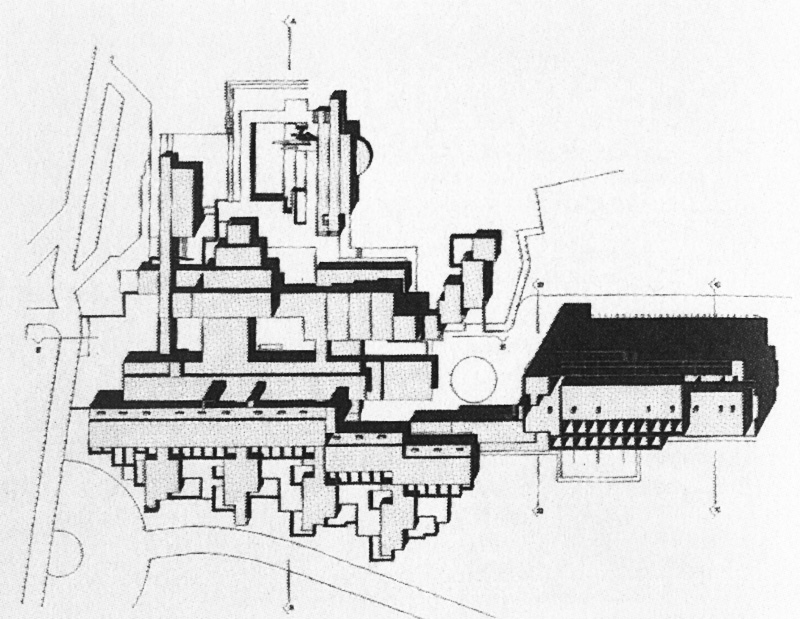 Plant covers tourist facility.
Plant covers tourist facility.
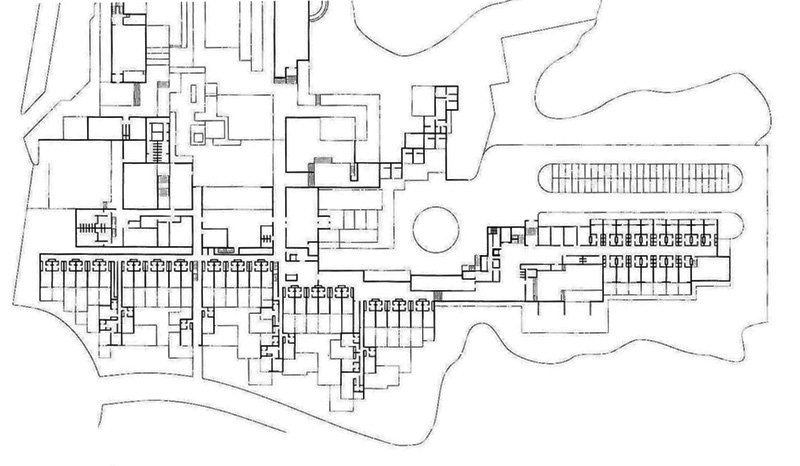 Ground floor space distribution
Ground floor space distribution
